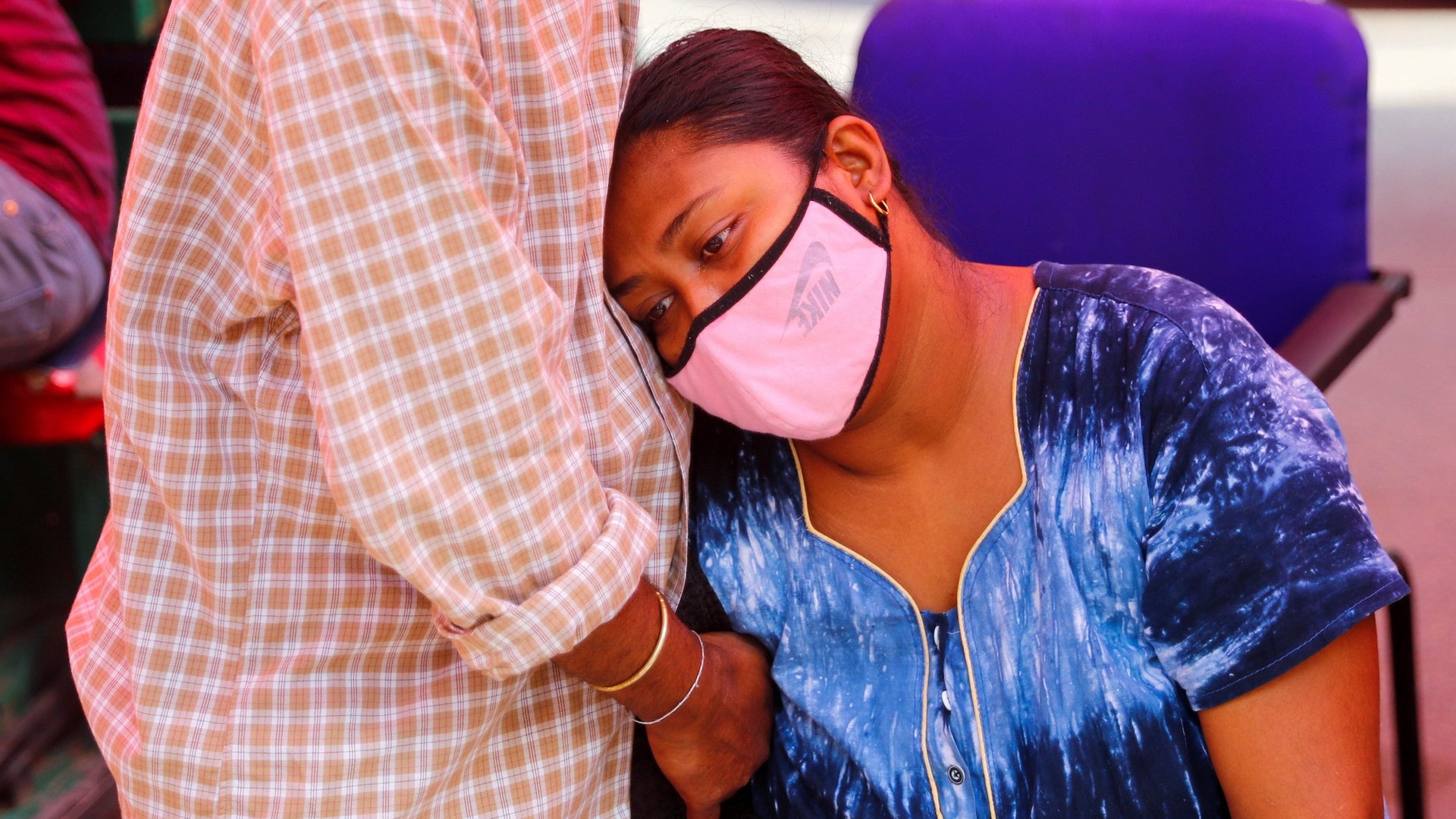India is fighting a healthcare crisis of unimaginable proportions with woefully outdated science
The official Covid-19 treatment protocol in India continues to encourage the use of treatments that many scientists across the world have written off.


The official Covid-19 treatment protocol in India continues to encourage the use of treatments that many scientists across the world have written off.
Even though these guidelines were revised by the country’s scientific task force on April 22, some of the recommendations in the new document are the same as the initial set that the government had announced in March 2020, when the world hardly knew anything about this virus and Covid-19 cases were only beginning to emerge in India.
A delay in updating these guidelines has led doctors to continue prescribing drugs such as hydroxychloroquine, favipiravir, and ivermectin, which showed early promise but were quickly found to be ineffective. It has also caused a panicked scurry for antiviral drug remdesivir, which became a popular therapy option as India’s case count kept surging past all previous records.
The guidelines have not kept pace with research perhaps because no one bothered with them during the months when the country’s first wave had died down. An investigation by The Caravan magazine found that India’s scientific task force on Covid-19 did not meet even once in February and March, even as new infections had begun to rise. After Jan. 11, it met on April 15 for the first time to assess Covid-19 surge, which had become unrelenting by then, The Caravan reported on April 22.
Ignoring the science on unproven medication
The April 22 guidelines from Indian Council for Medical Research (ICMR), India’s top research organisation, are divided into three parts based on the severity of the Covid-19 disease. In mild cases, it recommends basics like hydration, staying in a well-ventilated room, and paracetamol for when fevers spike.

Curiously, though it is not a “must do,” anti-malarial drug hydroxychloroquine features as a “may do” in that category. This much-talked-about drug, commonly known as HCQ, has shown no impact on death outcomes in Covid-19. In fact, it can have severe cardiac side-effects when given to Covid-19 patients. The EU had banned its use.
What is also alarming is that the health ministry’s latest guidelines (pdf) on home isolation, continue to recommend HCQ as a “prophylaxis” or preventive measure. There is no proof that HCQ works in those circumstances.
Till the end of January, official central government data showed that it had distributed 100 million tablets of HCQ to Indian states.
The same holds true for ivermectin, an anti-parasitic that was initially believed to help reduce the viral load. Doctors believe there is not enough evidence to support the claim that the drug has any real benefit for Covid-19 patients.
The ICMR has, though, removed favipiravir from its guidelines. Sold as Fabiflu, several SOS calls on social media were—and still are—frantically searching for even a single strip of this drug. The World Health Organization currently only recommends its use in clinical trial settings.
It has also pushed plasma therapy down on the priority list but has still not removed it.
The myth of plasma therapy
Convalescent plasma therapy has proven to have no benefit in Covid-19 patients. The ICMR’s own trial found weak evidence to support any meaningful use out of transfusing plasma from a Covid-19 recovered patient to a recovering one. If there is any evidence of its use, it is right at the beginning of the infection.
The ICMR guidelines too recommend its use only during the first seven days of Covid-19 symptoms, in early moderate disease. This loosely means that once a patient begins to need oxygen, plasma has no use—and definitely not when they’re already in the ICU. Yet, much like Fabiflu, social media is flooded with plasma donation requests.
Doctors are afraid not to administer plasma because they now fear the wrath of patients’ families. “If I don’t recommend it, families start accusing us of not trying enough. We try everything available to us because we’re desperate,” said a doctor at a private hospital in New Delhi on the condition of anonymity.
Plasma therapy also adds a strain on an already burdened healthcare infrastructure, because a donor needs to first give the plasma, then it needs to be tested for the strength of antibodies, and then be administered to a patient.
A big cause of worry is also that plasma therapy’s unchecked use could potentially create new virus variants. But despite evidence from its own clinical trials, the ICMR continues to cautiously keep plasma on its guidelines.
The research body is also silent on the perils of prescribing a cocktail of drugs, which seems to be the case in most medical institutions at the moment.
What works for Covid-19
Doctors say that in the case of coronavirus infections, less is more. That means, most people will need just symptom management with paracetamol, anti-allergy medication in some cases, and inhaled steroids under the doctor’s supervision for lung-related symptoms.
The ICMR is particularly silent in warning against the use of unproven medication, even as it clarifies the treatment protocol for emergency use drugs like tocilizumab. “Misused drugs include azithromycin, doxycycline, favipiravir, Itolizumab, and Coronil. These are not mentioned in the guidelines, but practitioners are busy prescribing them. This may cause more harm than good,” Dr Anup Agarwal, the lead author of ICMR’s plasma trial, wrote in The Hindu newspaper.
To bridge this gap, a group of doctors and health researchers have put together a simplified tip sheet for managing Covid-19 at home, and under medical supervision. This has also been translated into 12 Indian languages.